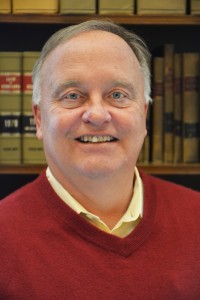Due to such a large collection of historical materials and resources relating to philanthropy and charitable organizations in the Indiana State Library’s collections, I was stumped on where to start my search. By browsing the stacks, I could see many materials on various organizations that focused on the betterment of people, society and communities. Annual reports, brochures and newsletters from various societies and organizations fill our shelves. Ultimately, by pure serendipitous discovery, my starting point found me.
With the impending bicentennial of Indianapolis, I had been focusing on adding materials to our digital collections from, or about, Indianapolis. So, while browsing our vertical files, I stumbled across a hefty file with lots of pamphlets, brochures, reports and so on. I pulled the file, and one particular item caught my eye: one about a Red Feather campaign.
I recognized the name from my work digitizing company employee newsletters. The campaign was a way of gathering up monetary donations to give to the Indianapolis Community Chest. From there, I found myself searching our collections and unearthed a range of materials about the Community Chest from its beginnings in the 1920s up to the 1950s. This became the starting point for our newest digital collection, “Charitable Organizations and Philanthropy.” The collection’s focus will be on the various organizations across the state.
Currently, I’ve only added materials about the Indianapolis Community Chest.
The Community Chest began in the early 1920s as a unified way to raise money for various social agencies around the city. It eventually became the Community Fund, and by the 1950s, was renamed the Indianapolis Community Chest.
The Community Fund was the financial arm of the Indianapolis Council of Social Agencies. Eventually, the organization morphed into what is currently called the United Way of Central Indiana. Its goal was to provide funds for various social agencies and groups such as the YMCA, YWCA, Salvation Army and the Girls and Boys Scouts, to name a few. After their fundraising, the Community Fund would give the money to the Indianapolis Council of Social Agencies for distribution.
The Red Feather campaigns, popular in the ’40s and ’50s, were being promoted in many company employee newsletters, such as Ayrograms and the Serval Inklings.
In the future, I will be adding more materials about other similar organizations across the state, as well as information about the Indianapolis Council of Social Agencies.
This post was written by Christopher Marshall, digital collections coordinator for the Indiana Division at the Indiana State Library.




